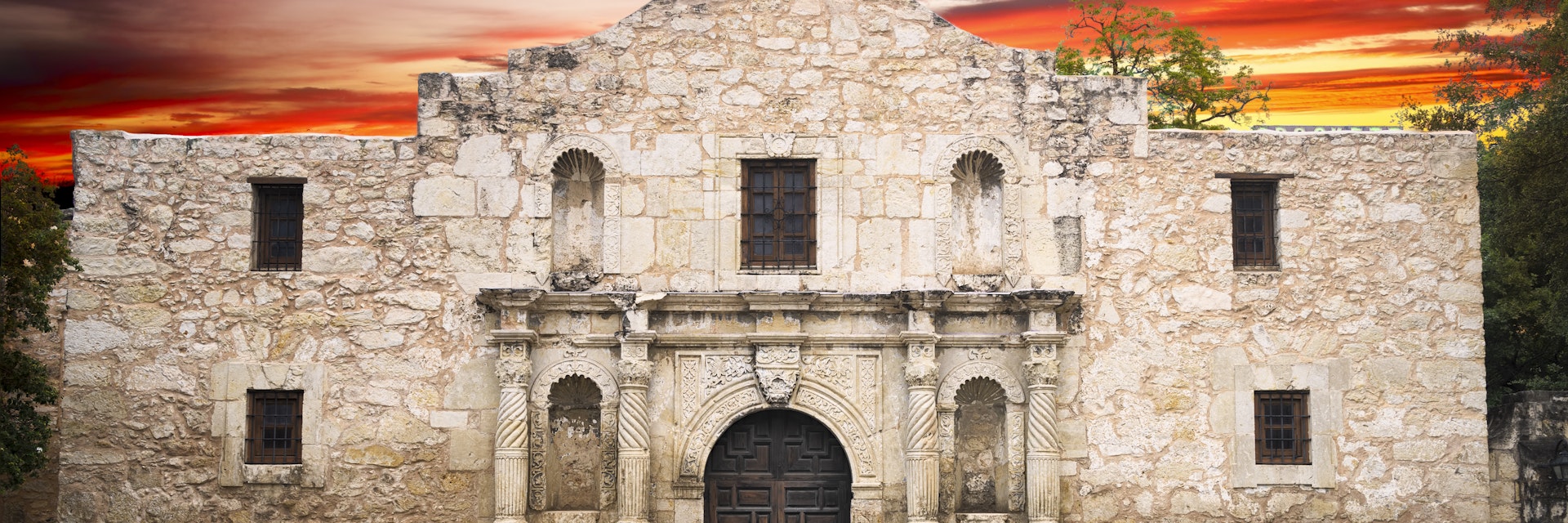Discover The Alamo Texas: An Icon of Guts and Heritage
Discover The Alamo Texas: An Icon of Guts and Heritage
Blog Article
Discover the Tradition of Texas at the Alamo Gallery: A Site of Society and Heritage
The tradition of Texas is delicately woven right into the material of this landmark, supplying site visitors a profound insight into the social tapestry and heritage of the state. The Alamo Gallery stands not only as a testament to the past yet likewise as a sign illuminating the cultural impacts that have actually shaped Texas into what it is today.
Historical Relevance of the Alamo
The historic relevance of the Alamo hinges on its function as a sign of courage and sacrifice during the Texas Revolution. The Fight of the Alamo, battled from February 23 to March 6, 1836, was a turning point in Texas history. The Alamo. Regardless of being significantly surpassed, a little group of Texan protectors held back Mexican pressures for thirteen days before ultimately succumbing. The valor and resolution displayed by those inside the Alamo came to be a rallying cry for the Texan independence motion.
The tradition of the Alamo extends beyond the fight itself. Following the Texan triumph at the Battle of San Jacinto in April 1836, where they yelled "Bear in mind the Alamo!" as they defeated the Mexican military and captured General Santa Anna, the Alamo came to be a powerful sign of Texas satisfaction and independence. The site was later on preserved as a monument to honor those who provided their lives in the fight for flexibility. Today, the Alamo stands as a testament to the long-lasting spirit of courage and sacrifice that helped form the identity of Texas.
Interactive Exhibits and Artefacts
Among the different immersive experiences used at the Alamo Gallery are interactive exhibits and a collection of historical artifacts. The interactive displays supply site visitors with a hands-on strategy to discovering concerning the rich background of the Alamo and Texas. Via interactive displays, guests can involve with the stories of the past, gaining a deeper understanding of the occasions that formed the region.
One notable exhibition is the interactive timeline, which guides site visitors through essential minutes in the Alamo's history. By connecting with this timeline, guests can discover significant occasions and numbers, bringing history to life in a instructional and exciting method. Additionally, the museum houses a diverse collection of artefacts going back to the time of the renowned fight. These artifacts supply a concrete connection to the past, allowing site visitors to see and touch pieces of history up close.
The Fight of the Alamo
During the very early 19th century, the Fight of the Alamo worked as a critical minute in Texas background. the alamo art. This historical event, which occurred from February 23 to March 6, 1836, was a substantial battle in the Texas Change. The dispute took place when Mexican troops led by General Santa Anna launched an attack on the Alamo Objective in San Antonio, where a team of Texian protectors, including renowned numbers like Davy Crockett and Jim Bowie, were stationed
Today, the Alamo Museum stands as a testimony to this historic fight, protecting artifacts and exhibits that memorialize the guts and spirit of those that passed away and combated during the Fight of the Alamo.
Cultural Influences on Texas

Mexican and spanish colonial histories have deeply affected Texas, evident in the design, language, and spiritual techniques prevalent across the state. German immigrants brought their practices of beer brewing, sausage making, and Oktoberfest events, which are still dynamic in Texas today. African American impacts are famous in Texas blues, jazz, and gospel music, adding emotional rhythms to the state's social tapestry.

Enduring Tradition of Texas
Structure upon the abundant tapestry of social influences that have shaped Texas, the withstanding heritage of this state is a testimony to the interwoven backgrounds and customs that remain to specify its significance. Texas's enduring heritage is deeply rooted in its varied cultural heritage, mixing Native American, Spanish, Mexican, and Anglo affects to create a special identity that reverberates via its art, music, food, and method of life.
The spirit of durability and freedom that identified the very early settlers of Texas throughout pivotal events like the Fight of the Alamo has left an indelible mark on the state's cumulative memory. This legacy of guts and resolution continues to inspire Texans today, shaping their values and shaping the means they deal with obstacles.
As Texas develops in the modern-day globe, its enduring tradition functions you can try these out as a pointer of the stamina located in unity, variety, and a shared dedication to preserving the rich tapestry of the state's background. Through the preservation of archaeological sites like the Alamo Gallery, Texans recognize their past while looking towards a future that accepts development while staying real to their cultural origins.
Conclusion
In final thought, the Alamo Museum stands as a testament to the rich background and social heritage of Texas. Via its interactive exhibits and artifacts, visitors can explore the historical significance of the Alamo and learn regarding the Battle of the Alamo.
The Alamo Gallery stands not just as a testament to the past but also as a beacon lighting up the cultural influences that have formed Texas right into what it is today.
The Fight of the Alamo, battled from February 23 to March 6, 1836, was an essential moment in Texas background. The interactive displays give visitors with a hands-on method to learning about the abundant background of the Alamo and Texas.Throughout the early 19th century, the Fight of the Alamo served as an essential minute in Texas history.In final thought, the Alamo Museum stands as a testimony to the rich history and social heritage of Texas.
Please visit one of our local supporters - Alamo Corporate Housing Rentals
Report this page